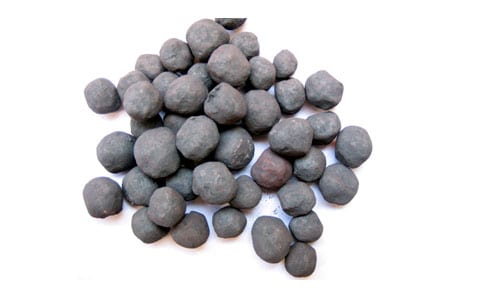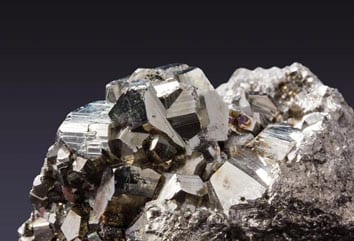Select Language:
Járn Ore er fjórða algengasta einingin í skorpu jarðar. Járn er nauðsynlegt til stálframleiðslu og því ómissandi efni fyrir hnattræna efnahagsþróun. Járn er einnig mikið notað í byggingariðnaði og við framleiðslu farartækja. Flest járnofhleðsla eru samsett úr metamorfæfði (BIFVÉLAVIRKI) þar sem járn er almennt að finna í formi oxíðs, hydroxides og að minna leyti kolsýringar.
Efnasamsetning járnofhleðslu hefur í ljós breitt svið í efnasamsetningu sérstaklega fyrir Fe efni og tengd gangráði steinefna. Helstu járnsteinefni sem tengjast flestum járnoreldunum eru hematite, goetite, limonite og magnetite. Helstu menjar í járnofhleðslu eru SiO2 og Al2O3. Dæmigerð kísil og alumina ber steinefni til staðar í járnoreldrar eru Quartz, kaolinite, gibbsíða hjá, diaspore og corundum. Of these it is often observed that quartz is the main silica bearing mineral and kaolinite and gibbsite are the two-main alumina bearing minerals.


Járnofhleðsla fer aðallega fram í gegnum opnar pípunnar námuaðgerðir, sem leiðir til markvissar sniðmyndunar. Framleiðslukerfi járnblendisins felur venjulega í sér þrjú þrep: Námuvinnslu, vinnsla og pelletizing starfsemi. Af þessum, Vinnsla tryggir að fullnægjandi járneinkunn og efnafræði náist áður en á pelletizing stigi. Úrvinnsla felur í sér skorið, Flokkun, mölun, and concentration aiming at increasing the iron content while reducing the amount of gangue minerals. Hver steinullareinangrun hefur sína einstöku eiginleika með tilliti til þess að járn og ganglag ber steinefni, og því krefst það mismunandi einbeitingar tækni.
Magnetic separation is typically used in high-grade iron ore beneficiation where the dominant iron minerals are ferro and paramagnetic. Blautur og þurr lágstyrkleiki segull aðskilinn (LIMS) aðferðir eru notaðar til að vinna úr oregi með sterka seguleiginleika eins og magnetite en blautur hástyrkleiki segulmögleika er notaður til að aðskilja Fe-bera steinefni með veikum segulmögnum eiginleikum eins og hematite úr gangue steinefnum. Iron oreldrar svo goeþíórar og limonite eru almennt að finna í tailandi og aðskilja ekki mjög vel af hvorri tækni.

Flotation is used to reduce the content of impurities in low-grade iron ores. Járnoreldrar geta verið einbeittir annaðhvort með því að beina óráði úr járnoxíði eða snúa við cationic flotation af kísil, Þó snúa cationic flotation helst vinsælasta flotation leiðin sem notuð er í járniðnaði. Notkun fláa takmarkast af kostnaði við endurgjöf, nálægð við kísil og alumina-ríkur slimes og nálægð karbónat steinefna. Ennfremur, flotation þarf úrgangsmeðhöndlun og notkun downstream devökva fyrir þurra lokaumsóknir.
Notkun flot fyrir styrk járns felur einnig í sér að desliming sem fljótandi í viðurvist sektum leiðir til lækkunar skilvirkni og hár cephascreen kostnaður. Desliming er sérstaklega mikilvægt fyrir að fjarlægja alumina sem aðskilnaði gibbsite frá hematite eða goethite með hvaða yfirborðsvirk lyf er mjög erfitt. Flest alumina ber steinefni eiga sér stað í fámennu stærðarbilinu (<20um) allowing for its removal through desliming. Overall, a high concentration of fines (<20um) and alumina increases the required cationic collector dose and decreases selectivity dramatically. Therefore desliming increases flotation efficiency, but results in a large volume of tailings and in loss of iron to the tailings stream.
Dry processing of iron ore presents an opportunity to eliminate costs and wet tailings generation associated with flotation and wet magnetic separation circuits. STET has evaluated several iron ore tailings and run of mine ore samples at bench scale (pre-feasibility scale). Significant movement of iron and silicates was observed, with examples highlighted in the table below.

The results of this study demonstrated that low-grade iron ore fines can be upgraded by means of STET tribo-electrostatic belt separator. Based on STET experience, the product recovery and/or grade will significantly improve at pilot scale processing, as compared to the bench-scale test device utilized during these iron ore trials.
The STET dry electrostatic fine iron ore separation process offers many advantages over traditional wet processing methods, such as magnetics or flotation, Meðal:
Contact us to learn more about dry processing of iron ore.
Tilvísanir: